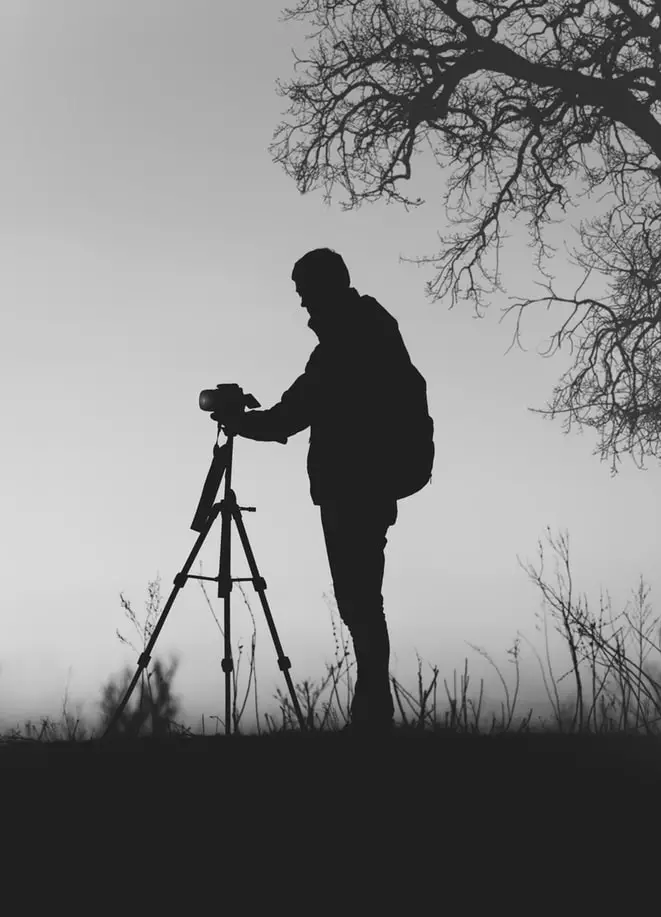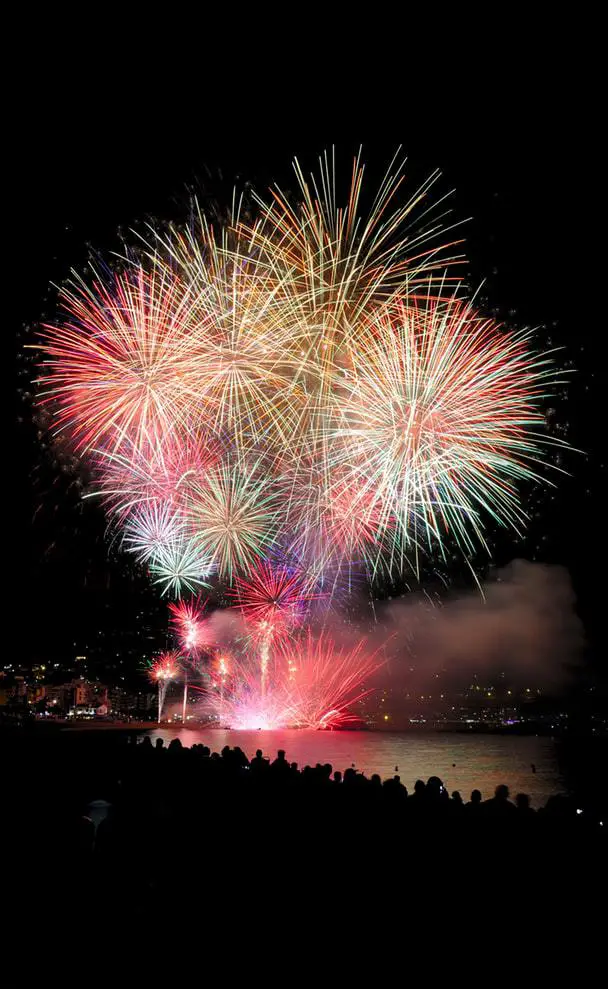As an Amazon Associate we earn from qualifying purchases.
Nothing is quite as majestic as sparks dancing across the sky — or quite as hard to photograph. Shooting fireworks combines several difficult aspects of photography, shooting in the dark, shooting motion, and shooting unpredictable subjects.
While photographing fireworks may take some trial and error, with the right gear and tricks, you can shoot an entire fireworks show and walk away with several great shots. Without them? You’ll end up with dark, blurry, or even overexposed images.
Since shooting those dazzling night displays is so tough, we’ve put together a beginner’s guide on how to photograph fireworks, complete with the best camera settings for fireworks.
Contents
How to Photograph Fireworks: What You’ll Need
You don’t need the most expensive DSLR to shoot fireworks (though you could certainly get great shots with it). A DSLR is your best bet for shooting fireworks, and you can pair it with a wide-angle lens for scenic shots or a telephoto for images of only the fireworks burst.
But if you don’t have a DSLR, you can apply these same tips to any camera with manual modes, and can sometimes get good results by using the fireworks scene mode.
A tripod is essential for shooting fireworks. To both properly expose the image and capture the path of the sparks, you’ll need to hold the camera completely still — and that’s pretty much impossible without a tripod.
While the high-end tripods are more durable, easier to carry, and often sturdier, an inexpensive tripod will often do the trick — just read the reviews to help choose something that’s sturdy and not going to dump your gear in the dirt.

Tripod is your best friend.
Of course, anytime you take photos, you’ll also need a memory card. You’ll end up shooting lots of photos and getting a handful of keepers from them, so it’s best to choose a large and fast memory card (or two smaller memory cards).
It’s also a good idea to bring a flashlight along, especially if you’re not familiar with the settings on the camera. Adjusting your camera settings in the dark can be tricky, so a flashlight is sometimes nice to have. To stay comfy during the shoot, you might want to bring along a lawn chair too.
How to Photograph Fireworks: Getting Set-Up
Moving all your gear in the middle of a fireworks show is tough, so put some thought into where you set up to get the best shots — you’ll probably want to arrive early at busy shows. Look for a spot that gives you an unobstructed view. Avoid areas with power lines or lots of trees.
Beyond looking for a clean view, scope out a spot that offers wide scenic shots too. Setting up near water will allow you to capture the reflection of the fireworks show. Consider whether you want other spectators in your photos or not.
Once you’ve picked your spot, get your tripod set up. Consider both the role the perspective plays in your images and comfort. Standing crouched for a long show will get uncomfortable quickly.
Fireworks shows are great for getting both wide-angle and close-ups of the bursts. If you have both a wide-angle lens and a telephoto, keep them both ready.
The Best Camera Settings For Fireworks
Before the show starts, get your camera settings in place. While you’re shooting in the dark, your subject is actually pretty bright. But, manual mode is a must for fireworks. While that may sound scary for beginners, the manual controls are a must for getting properly exposed shots.
With the tripod, you can use a low ISO between 100 and 500 to keep the noise down. Narrow apertures usually work well, since the fireworks are so bright, like f/11 but you can adjust as needed.

So what’s the best shutter speed for fireworks? I use bulb mode, which allows you to both start and stops the photo by pressing the shutter release again. In bulb mode, you can shoot for just a second, or even minutes — you control when the camera stops taking the image.
Bulb mode allows you to shoot to capture the entire path of the fireworks and to adjust when there are multiple fireworks in the photo (more on that next).
One of the trickiest parts of photographing fireworks is focusing. Cameras need light to focus, so they can’t focus well in the dark. You’ll need to switch to manual focus mode, then focus on something that’s the same distance as the fireworks.
If there’s nothing at the same distance, you’ll need to work quickly in the first few bursts to bring them into focus (this is also where a wide aperture will help, if you use manual mode instead of shutter priority).
How to Shoot Fireworks: During the Show
Once your tripod and camera settings are in place, you’re ready for the show. Using bulb mode, you can start the exposure just before the firework bursts and end it just after. Getting the timing right takes some practice, but most fireworks show offer plenty of opportunities for that.
Listen for the whistle as the firework is sent up in the air, then start the exposure just before you expect it to explode, hitting the shutter release again when the sparks start to fizzle out.
Check your LCD screen occasionally, with the exposure length varying in bulb mode, you may end up with some shots that are over or underexposed, though the first is usually the more common issue.
If the show starts right at dusk, you’ll need to adjust your ISO or exposure compensation as the show goes on. For example, if you want a dark photo showing only the light of the firework but there’s a small amount of sunlight left, you can use negative exposure compensation to make the image darker, the firework itself is often plenty of light.

While the best part of the show to watch maybe the finale, it’s best to get your shots finished before the big ending. Why? While one to three fireworks work great, once you get several fireworks in the shot, it’s too bright. You can use a shorter exposure, but you’ll lose the effect of seeing the spark’s progression, making them tiny dots instead of shapes.
By the finale, there’s also often lots of smoke in the sky. It doesn’t hurt to try, but try to get in the bulk of your shots during the main part of the show (and then you can sit back and relax for the finale!).
Fireworks are challenging to shoot, but also create some amazing images. From planning ahead enough to bring along a tripod to using bulb mode to capture the entire firework’s progression, you can capture great fireworks photos with a few tricks and a bit of practice.
